What is HP EVA SAN?
HP EVA is short for HP StorageWorks Enterprise Virtual Array, a family of enterprise-class storage systems produced by Hewlett Packard (HP) starting from the early 2000s. In essence, it offered a centralized platform in which data from various sources could be stored and managed in a consistent manner. Back then, it was recognized as one of the leading storage solutions available in this segment, known for its reliability, great performance and capability to handle large volumes of data.
This SAN family has been regularly enhanced to meet the evolving storage needs of enterprises. Throughout its lifespan, several generations of HP EVA have been released:
-
HP EVA 3000/5000 series – the oldest models introduced by Compaq in the early 2000s, designed mainly for pooling storage resources and simplifying storage management tasks.
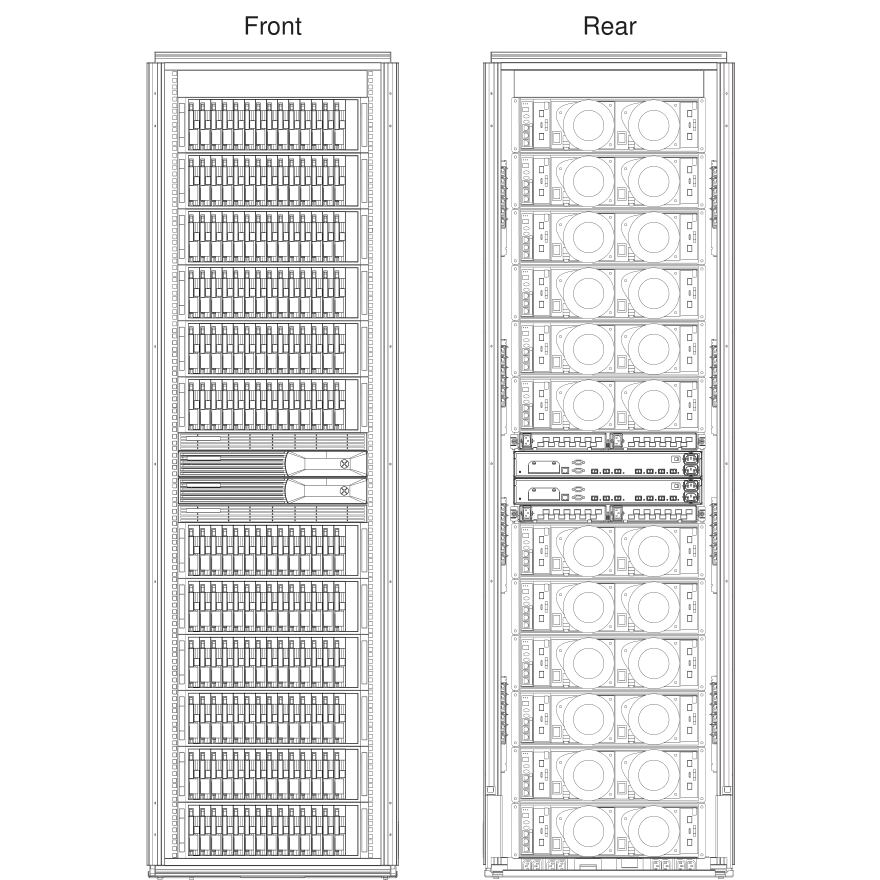
Pic. 1. HP EVA of the 3000/5000 series.
-
HP EVA 4100/6100/8100 series – the later models presented around the mid-2000s as a notable advancement over the previous generation with regard to scalability, performance and features like virtualization and snapshots.
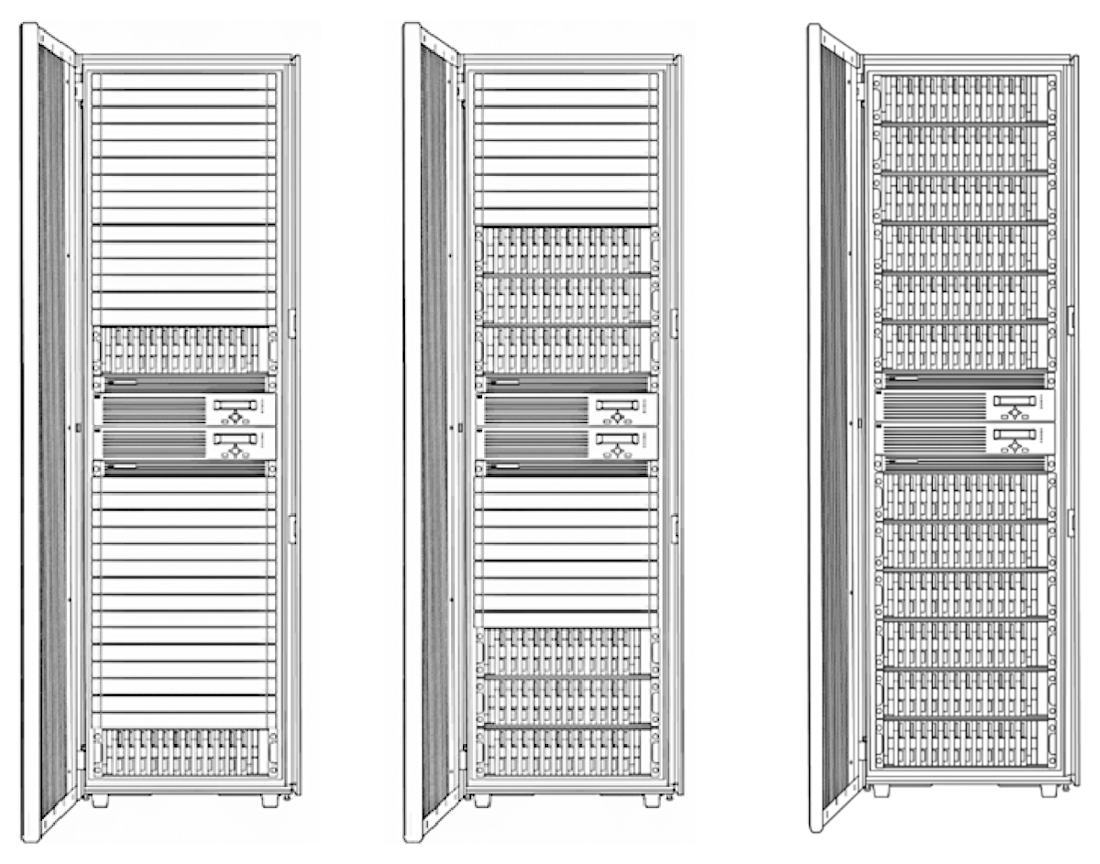
Pic. 2. HP EVA of the 4100/6100/8100 series.
-
HP EVA 4400/6400/8400 series – the models launched in the late 2000s and early 2010 that continued the evolution of the HP EVA SAN line, bringing further improvements in scalability, performance, and introducing new options like thin provisioning and online LUN migration.
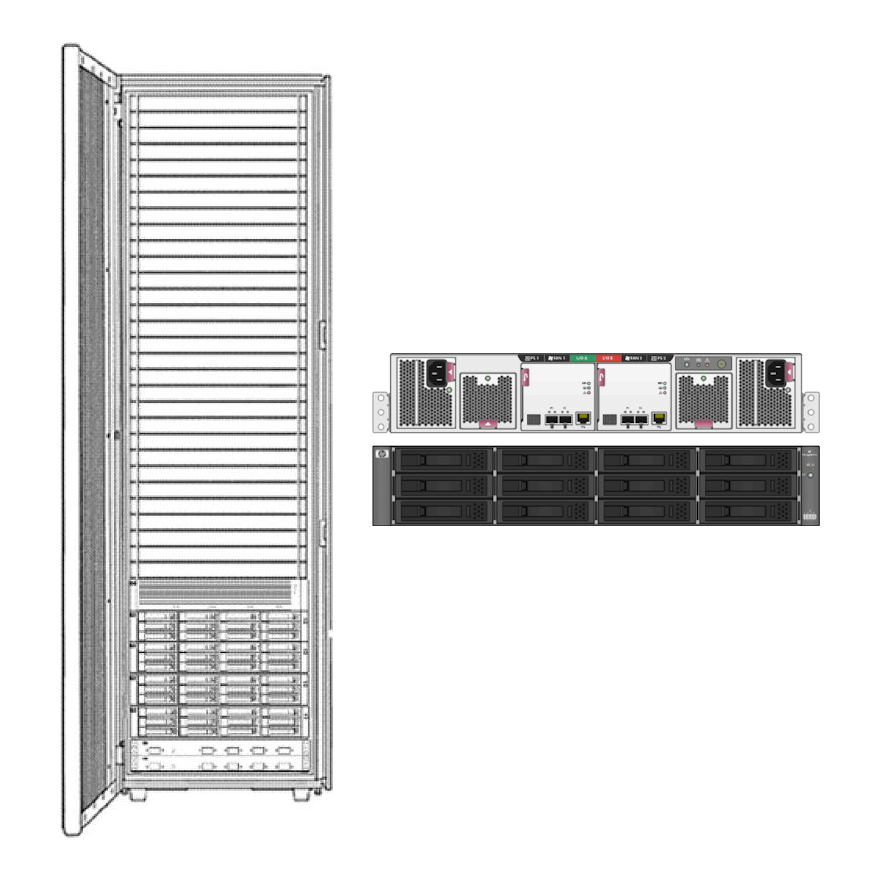
Pic. 3. HP EVA of the 4400/6400/8400 series.
-
HP EVA P6300/P6500 series – the latest EVA models designed to address the dynamic storage demands of business environments, deliver superior scalability and much better performance.
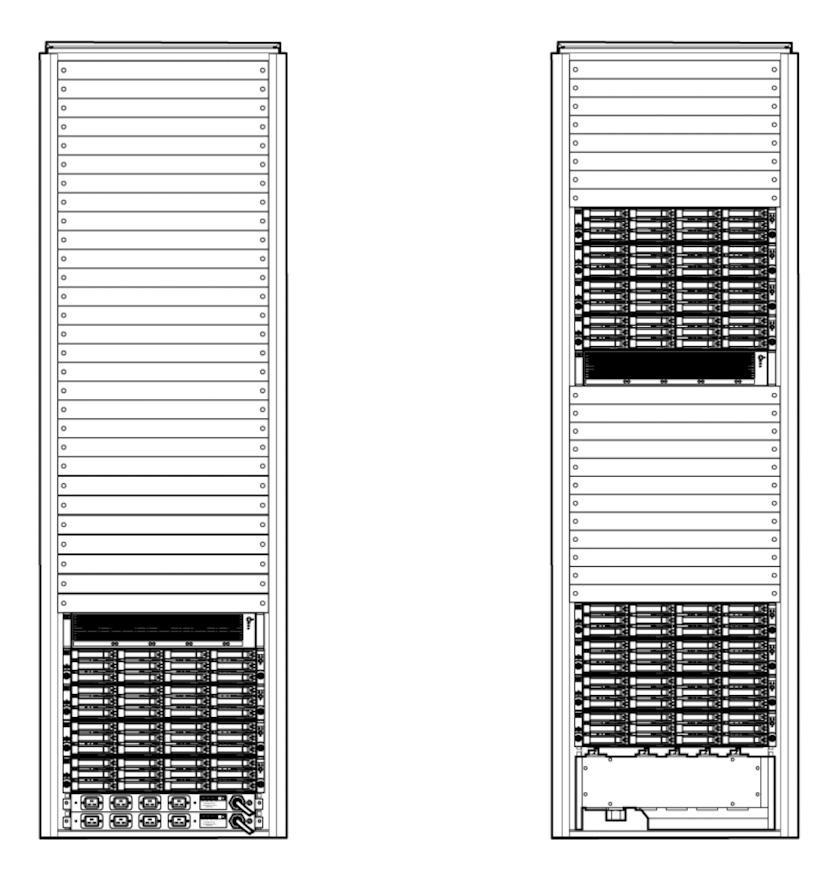
Pic. 4. HP EVA of the P6300/P6500 series.
The typical EVA system consists of the following elements:
HP EVA hardware
The hardware of HP EVA SAN comprises at least one disk shelf housing the physical drives and one or two diskless controllers responsible for managing storage operations.
Fiber Channel optic cables are used to establish its connection with the server(s). It is possible to attach it directly to a Fiber Channel HBA installed in a server or to a Fiber Channel switch within the SAN.
The internal communication between the controllers, disk shelves and other components within the SAN is organized through the Fiber Channel technology in older HP EVA generations, and through SAS (Serial Attached SCSI) in the latest generations of the storage system.
All the SANs of the first and second generations from EVA 3000 to EVA 8100 employ the M5314 Fiber Channel Arbitrated Loop (FC-AL) disk shelves. Such shelves are typically designed in the 3U form factor and accommodate up to 14 FC-AL disk drives. The drives are equipped with native Fiber-ATA connection and have to be read directly from their disk shelves. Alternatively, special adapters can be used to access them outside the respective hardware.
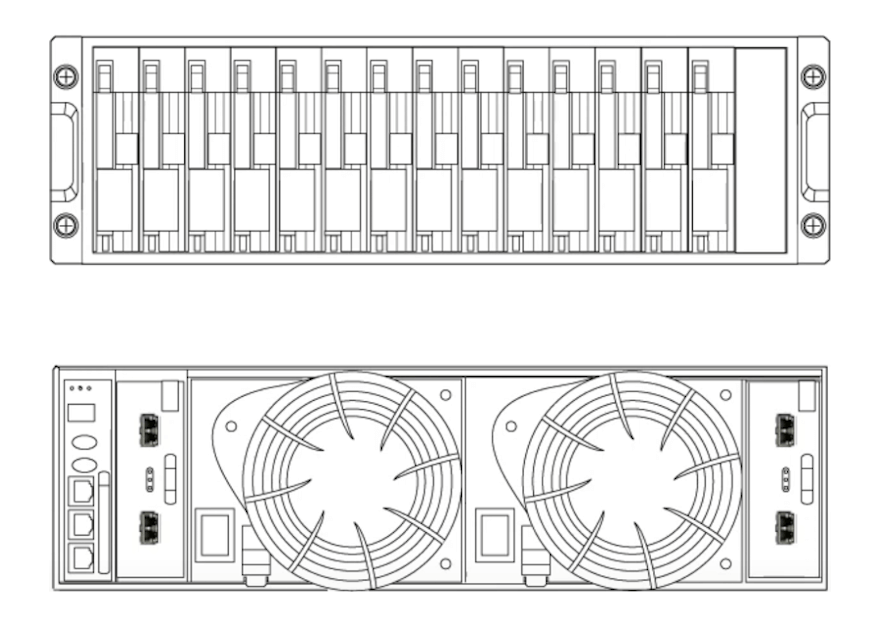
Pic. 5. HP EVA M5314 FC disk shelf.
The third generation, from EVA 4400 to 8400, uses the newer-design M6412 disk shelves. They have a 2U form factor, native Fiber-ATA connectivity and can hold up to 12 higher performance disk drives.
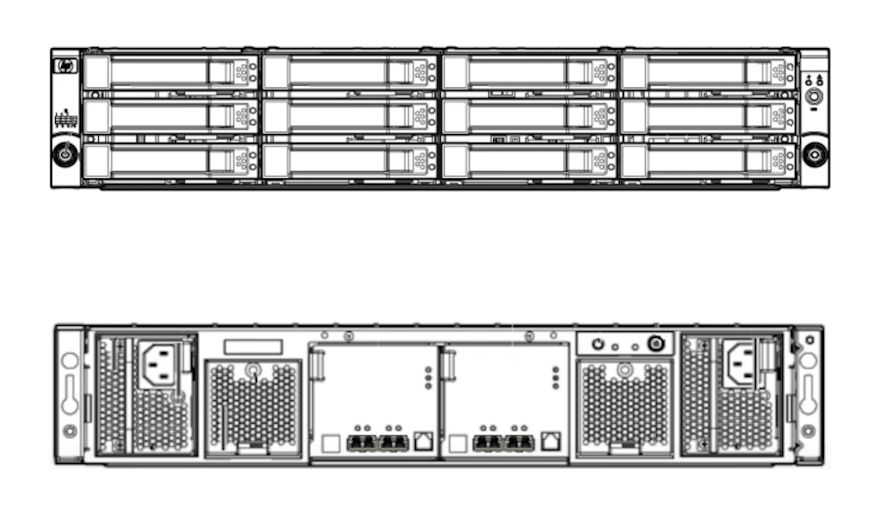
Pic. 6. HP EVA M6412 FC disk shelf.
The latest generation, from EVA P6300 to P6500, utilizes both large and small form factor disk shelves of a similar design that feature a SAS interface.
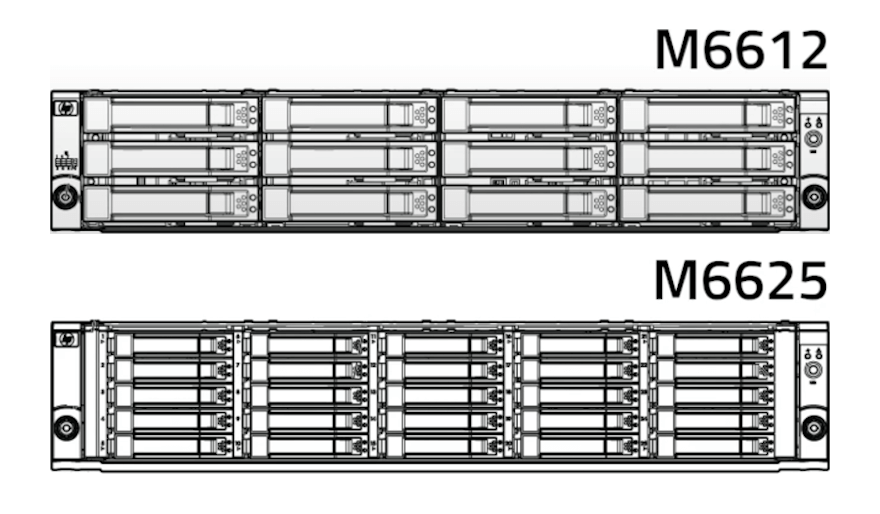
Pic. 7. HP EVA M6612/M6625/M6710/M672/M6730 SAS disk shelf.
HP EVA firmware
The firmware regulating the behavior of the storage controllers, disk shelves, etc. is embedded within the respective hardware components. The applicable firmware versions may vary significantly depending on the generation and the model of the EVA system.
HP EVA software
This part is represented by special management software that allows administrators to interact with the EVA SAN, configure the system, control its storage resources, set up data protection mechanisms and perform other tasks. There are variations of this management software across different generations of EVA systems.
Data organization peculiarities
Data organization on an HP EVA is rather complex and involves multiple layers of abstraction:
Physical drives: The lowest level of data organization comprises a number of physical drives installed within the disk shelves of the EVA system.
Disk groups: Physical drives can be aggregated into logical units called disk groups. Disk groups are the basic storage containers in the EVA system and serve as the basis for creating virtual disks (Vdisks).
Virtual disks: Vdisks are logical storage volumes created within disk groups. They can have different levels of redundancy, also referred to as Vraid:
-
Vraid0 improves the speed by using data striping, yet, offers no redundancy;
-
Vraid1 is optimized for data redundancy, but consumes a lot of disk space to store a mirror copy of the data;
-
Vraid5 provides a balance between the speed, data redundancy and efficient use of the disk space by storing the parity calculated for each stripe of the data;
-
Vraid6 ensures a higher level of redundancy by storing two parity blocks per each stripe of the data.
Though implementing RAID-like functionality, Vraid is a proprietary technology that differs considerably from the traditional RAID. It provides virtualized RAID configurations, in which the data is distributed across all available physical drives.
It is also worthy of note that the size of a singe Vdisk cannot exceed two terabytes in the older versions of HP EVA. In the newer versions, the firmware virtually creates larger volumes by combining several volumes of two terabytes or smaller into a spanned volume.
Storage pools: Some HP EVA solutions support storage pools, virtualized storage resources that collect the storage capacity from multiple disk groups. Storage pools provide greater flexibility and facilitate storage management tasks.
Thin provisioning: Newer HP EVA systems offer thin provisioning that allows administrators to allocate space from the storage pool dynamically, without physically reserving it until the data is actually written to the virtual volume.
Common data loss problems
Despite their solid reputation in terms of reliability, HP EVA SAN systems are not immune to data loss issues arising from a variety of factors. Some common problems that may affect them include:
Vraid metadata damage: This metadata contains the essential information associated with the Vraid layout and data distribution within the HP EVA SAN. Its corruption can lead to configuration issues, cause data inaccessibility or even its loss.
Controller failures: One or more of the controllers managing the array may start malfunctioning or become inoperable. This situation often results in data access disruptions and also compromises data protection mechanisms, posing a significant threat to the integrity of data stored within the entire HP EVA SAN.
Drive failures: In Vraid configurations with redundancy, the system can compensate for the loss of the failed drive and continue to operate. Yet, there is still a risk of data loss if another drive fails before the faulty drive is replaced. In addition, data corruption may occur on other drives within the same group.
Firmware or software issues: Glitches in the firmware or software running on HP EVA SAN can cause unexpected behavior, unavailability of the data, its corruption or, in the most severe cases, even the loss of entire volumes.
Human errors: Apart from accidental deletion and other typical mistakes, the system maintenance operations like firmware updates, disk replacements or reconfigurations can have harmful consequences and inadvertently lead to data loss when not performed correctly.
To minimize the risk of permanent data loss, it's not only necessary to implement best practices for data protection, but also to have a robust plan in place for data recovery from HP EVA SAN systems in the event of such incidents.
The described technology is supported for data recovery and access by the following software products:
-
UFS Explorer Technician with Data recovery plugin for HP StorageWorks EVA Full support